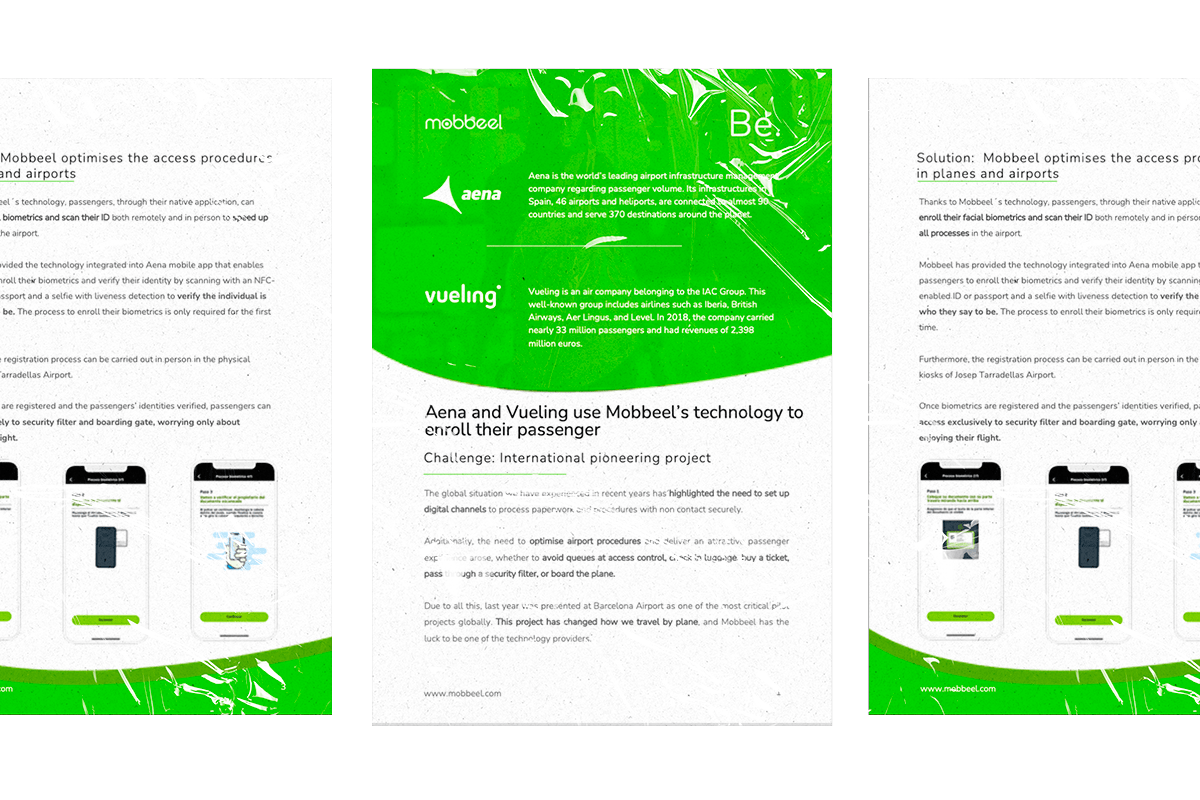Every year, millions of people from non-EU countries pass through the borders of the Schengen Area, and all signs suggest that these numbers will continue to rise. Some of these travellers hold short-stay visas, while others come from countries that do not require a visa. This necessitates a modernisation of border control, aiding travellers while ensuring security.
Naturally, there are established regulations governing border crossings, but in 2017, a significant new regulation was introduced: the Entry/Exit System (EES), a game-changer in border management. Furthermore, in 2018, another system, the European Travel Information and Authorisation System (ETIAS), was established to manage travel authorisations to Europe.
In this context, the Entry/Exit System stands as a cornerstone in the efficient management and control of borders. It not only bolsters security but also streamlines the transit process for legitimate travellers, striking a real balance between security needs and traveller convenience.
What is the Entry Exit System of the Schengen Area in the European Union?
The Entry/Exit System (EES) is an automated information system that records travellers from non-EU countries. This system will apply to both short-stay visa holders and visa-exempt individuals, activating each time they cross an external border of the Schengen Area in the European Union. This will allow for more efficient monitoring of the allowed stay duration for travellers, which is 90 days within a 180-day period.
The Entry/Exit System will gather information such as the traveller’s name, the type of travel document used, biometric data (fingerprints and facial images), as well as the dates and places of entry and exit, always ensuring respect for fundamental rights and the protection of personal data.
Additionally, the EES will keep a record of instances where entry is denied to an individual, including the reasons for such denial.
This Entry/Exit System is set to replace the current manual passport stamping method, which is slow, often unreliable in terms of border movement information, and ineffective in detecting individuals who overstay the permitted duration.

Additionally, the EES will play a crucial role in combating irregular immigration and in safeguarding the security of European citizens. This system will not only make it easier for third-country nationals who meet the requirements to travel, but it will also more effectively identify those who overstay their authorised period and cases of identity fraud. Furthermore, it will promote the use of automated border controls and self-service systems, which are quicker and more convenient for travellers.
The responsibility for developing and managing the Entry/Exit System falls to the European Agency for the Operational Management of Large-Scale IT Systems in the area of freedom, security, and justice (eu-LISA).

What is ETIAS?
The Entry/Exit System (EES) will operate in conjunction with the new European Travel Information and Authorisation System (ETIAS), which is set to become operational in mid-2025. ETIAS has been delayed along with the EES, but it is expected to be up and running a few months later.
ETIAS is a travel authorisation required for non-EU citizens who DO NOT need a visa to enter the Schengen Area, designed to enhance the EU’s control over these entries.
This will impact around 1.4 billion people from over 60 countries who are visa-exempt, requiring them to obtain a travel authorisation for short stays in 30 European countries.
However, it is important to note that ETIAS is not a visa, nor is it an IT system like the EES. This system will allow travellers to independently enter their data, which will then be validated.
Therefore, as can be seen, ETIAS is a travel authorisation that will be checked at any of the self-service terminals that are part of the Entry/Exit System (EES).
What is Schengen Area?
The Schengen Area is a zone comprising several European countries where internal border controls (between these countries) are absent, shifting border control to the external borders (with non-member countries).
Thanks to the Schengen Area, over 400 million people can freely travel between member countries without undergoing border checks.
The Schengen Zone was initiated in 1985 as a joint project among five EU nations: France, Germany, Belgium, the Netherlands, and Luxembourg. Since then, it has expanded to become the world’s largest area of free movement.
The Schengen Agreement is named after a small village in Luxembourg, located on the border with Germany and France. For member countries of the Schengen Area, this means:
– No internal border controls, except in situations of specific threats.
– Conducting standardized controls at external borders, following well-defined criteria.
Which countries are part of the Schengen Area?
When will the European Entry/Exit System come into effect?
The implementation of the Entry/Exit System (EES) has been significantly delayed from its initial planned date in 2022. It was first moved to May 2023 and then to the end of 2023.
It is now anticipated that the EES will start operating in the autumn of 2024. This delay is due to a request from France to postpone the implementation of the EES until after the Paris Olympics in the summer of 2024.
Key components for the implementation of the EU’s Entry/Exit System (EES)
One of the major improvements of the system is enhanced efficiency in traveller processing. Biometric technology speeds up the identification process, improving the management of airport traffic flows and significantly reducing waiting times and long queues. Furthermore, at high-traffic entry points, the system efficiently handles large volumes of travellers, ensuring a steady and organised flow.
In terms of security and fraud detection, the system offers several advantages. Biometric identification through technologies like facial and fingerprint recognition helps prevent illegal entries and fraudulent activities.
The system’s effectiveness relies on extensive and well-maintained databases that store and process biometric and personal information. These databases are updated in real-time, ensuring that the information is current and accurate. All data collected by each of the member states are sent to a global database controlled by the European Agency for IT, known as eu-LISA, which also oversees the entire technological infrastructure.
The travel experience is also optimised. The system minimises the need for physical interactions and extensive documentation, making the process less intrusive and faster. This not only streamlines the procedure but also enhances security, thereby improving traveller confidence and comfort.
Furthermore, for professionals in charge of border management, the EU’s Entry/Exit System offers advanced tools for border control, enhancing their ability to monitor and manage people flows.
However, there are also additional challenges and considerations to bear in mind:
- Privacy and data protection are crucial aspects, especially when handling biometric data, requiring strict protocols. The EES will store personal data for three years and one day from the last recorded exit.
- The system’s effectiveness also depends on international cooperation and coordination, presenting various challenges at the levels of political and regulatory coordination, tenders, etc.

Using biometrics to enable smart borders
The use of biometrics at border controls has proven to be an effective and highly convenient method for travellers, offering precise and secure authentication.
Imagine you’re travelling to another country. You arrive at the airport, weary from your flight, and all you want is to get through border control quickly. This is where technologies like facial recognition come in. Instead of rummaging for documents and waiting in long queues, you simply stand in front of a camera. It recognises your face, confirms your identity, and that’s it! You’re through in an instant. That’s the brilliance of biometrics: it makes your journey easier and safer.
What biometrics will the Entry/Exit System use?
For individuals who require a visa to travel to European countries using the Entry/Exit System, the system will only store their facial image, as their fingerprints will have already been recorded in the Visa Information System (VIS) at the time of visa application.
Enhancing efficiency and security in border control
Our advanced digital identity verification solutions can be seamlessly integrated into the EU’s Entry/Exit System, bringing significant improvements in its operation and security.
Firstly, biometric authentication within the Entry-Exit System is crucial. Facial recognition has been enhanced through the use of deep learning algorithms, speeding up and increasing the accuracy of the process. Additionally, fingerprint technology provides an extra layer of security, ideal for more stringent verifications. Moreover, MobbID, our Multibiometric Authentication solution, includes voice recognition as a less invasive option, particularly useful in contexts where physical contact is best avoided.
We ensure that our technologies comply with European data protection regulations, such as the GDPR.
Contact us if you want to learn more about how our technology can enhance passenger flows in airports.

I’m a Software Engineer with a passion for Marketing, Communication, and helping companies expand internationally—areas I’m currently focused on as CMO at Mobbeel. I’m a mix of many things, some good, some not so much… perfectly imperfect.

SUCCESS STORY
Discover Europe’s leading pioneering airport project
This project integrates into a single process all the steps that passengers go through at the airport until boarding the plane, using biometric technology instead of showing their ID.




